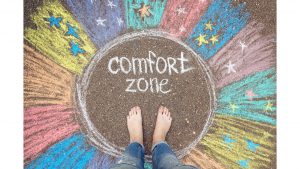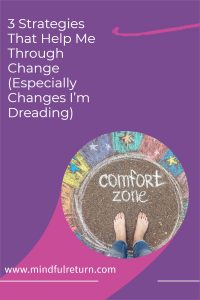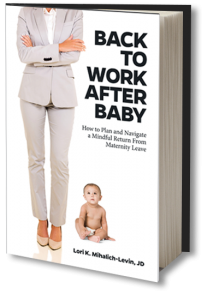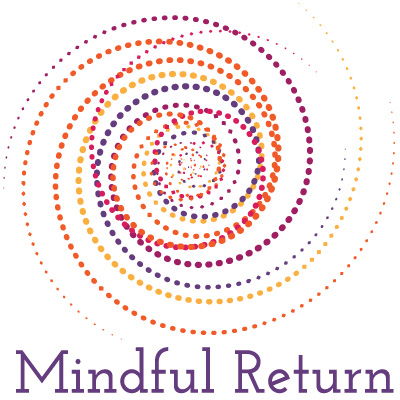 For as hard and awful as the many lockdown months of the pandemic were for me and my family, I wound up finding some comfort and stability in the daily lack of change. Every day in our house looked pretty much like the one before.
For as hard and awful as the many lockdown months of the pandemic were for me and my family, I wound up finding some comfort and stability in the daily lack of change. Every day in our house looked pretty much like the one before.
We took hikes along the same well-worn paths. (That is, until we just couldn’t bear those hikes anymore.) We ate every meal at the same table. There was plenty to be anxious about, but change wasn’t at the top of the list.
Now, it seems change is one of our primary worries. That, and the speed at which things are changing. First, there was the CDC guidance about masks. Then suddenly, we were getting e-mails from our kid’s soccer league, suggesting kids could un-mask while playing in a game two days later. “Wait! Not yet!,” I screamed. “We signed up for this soccer season on the assumption of masks. Now the change is set to happen in 48 hours?” (I’ve since found comfort in this thoughtful piece on the subject by Emily Oster: Wearing Masks Outside: Is it necessary if unvaccinated?)
Last week, I heard about an office that gave its employees one-week’s notice to get themselves back in the office 5 days/week. (NOT a policy I would recommend, by the way, for so many reasons, the least of which is that parents can’t find childcare in that short a period of time.) But wow was that a quick turn-around on company policy.
Our Histories Affect How We Perceive “Change”
As we enter a time period with heaps of change, it helps, I think, to spend a few minutes reflecting on our own personal history and relationship with the concept. Yes, I could get all Zen here and point out that COVID taught us that nothing can be planned, change is a constant, etc. But just because that’s so doesn’t mean we don’t have long and intimate histories with how we have coped with change throughout our lives.
I, for one, grew up in a household where change was a *very* bad thing. Worse, it seemed, than pain, suffering, or abusive behaviors. I lived in the same house for 18 years before leaving for college. My parents hated one another but stayed married for decades. Anyone who introduced ideas that were outside of “the way it is” was radical. And suggestions that things even could change for the better were quickly squashed. When I was a teenager, I literally burst into tears when the post office changed our zip code to a new number. That’s how ingrained this mentality was.
After heading off to college, then France, then law school, I was greeted with a scorn-filled “You’ve changed, Lori.” Yes, I thought to myself, I have! I’ve grown, and learned. And I’ve blossomed, and found love and things I’m passionate about. But this statement was not meant as a compliment. Change was perhaps the worst sin and crime I might have committed as a human.
Now, as a 42-year old woman who has navigated more of life, and parenthood, and work, I can zoom out and see change as a necessary, helpful, and even beautiful part of life. But gosh darn it if I don’t sometimes get hooked into that “please don’t have anything change on me, because it’s going to be horrible if it does!” anxiety loop. Acknowledging where that idea came from is the first step toward seeing it when it grips me. And in choosing to let it go.
3 Strategies That Help Me Through Unwelcome Changes
I’ve discovered that a number of strategies help me cope with changes that fill me with anxiety and dread. Here are three of the tools I find most helpful:
- Dip a toe in the water, and avoid avoiding.
After my second son was born, I became terrified to drive a car. Fear gripped me so much and told me I was going to get into a wreck and kill my babies. So, little by little I stopped driving. Not driving at all was untenable for my relationship with my husband and for our family’s basic existence, though. Eventually, I sought help. The therapist I found who was willing to get me back in the car taught me that avoidance only serves to increase anxiety. The more we stay away from something, the bigger and darker our fears get. Our first session in the car together, we literally just sat there. My baby step was getting into the driver’s seat and feeling comfortable there. Then turning on the engine was the next baby step.
When I transitioned back to work after maternity leave, I also adopted a phased and incremental approach. I phased my baby into daycare, 2 hours the first day, 3 hours the second, and so forth. I did the same for my return to work.
As we think about going back to our offices, let’s think about how we can dip our toes in the water and approach the return incrementally. The guidance my firm issued this week was a requirement that we show up *at least one time* in the office this summer. We were told to come shred documents, check on plants, and discover whether foreign objects were growing in our refrigerators. As an employee, the humor was welcome, and I love this approach of exposing ourselves a tiny bit at first to the situation that’s giving us anxiety.
- Draw strength from reminders of past changes.
When I’m faced with a new challenge, I often find it helpful to remind myself of trials I’ve faced in the past that I’ve managed to overcome. In the Mindful Return Course, we always ask new parents to spend time reflecting on tough situations they’ve made it through in the past, to put their current transition back to work after leave in perspective.
Here, ask yourself: when have you navigated a change that really challenged you? And what helped you make it through? If you’re looking for examples (and you’re reading this blog), then I know you’ve navigated the massive change of welcoming a child into your life in the past. You’ve also likely managed a transition back to work after a parental leave. We build muscles as we go through these transitions. And those muscles can help you lift the weight of the return-to-the-office change now
- Focus on the positive aspects of these upcoming changes.
A working mama friend of mine went back to the office for the first time last week, just to dip her toe in. And she was positively glowing from the experience. A quiet office! A commute as a transition period for listening to podcasts or reading! A reminder of my non-parent identity! An uninterrupted workday! The security guard I missed and hadn’t seen in a year!
Though we sometimes view our offices in stark, black and white terms, as either the Mothership or the Death Star (credit to Helen Cowan of The Tall Wall for this analogy), the reality is likely that life in our offices was not all good, and not all bad.
So when my mind goes into the fearful “oh no, I’m terrified of returning to the office” spiral, I remind myself of the people I will enjoy seeing. The spontaneous conversations that can help ideas grow. And for goodness sakes some peace, quiet, and honest-to-goodness boundaries between work and home.
What helps you to navigate change? Please post your ideas in comments here, so that the community can benefit from your wisdom!
Want more practical tips on working parenthood? Check out my book, Back to Work After Baby: How to Plan and Navigate a Mindful Return from Maternity Leave



